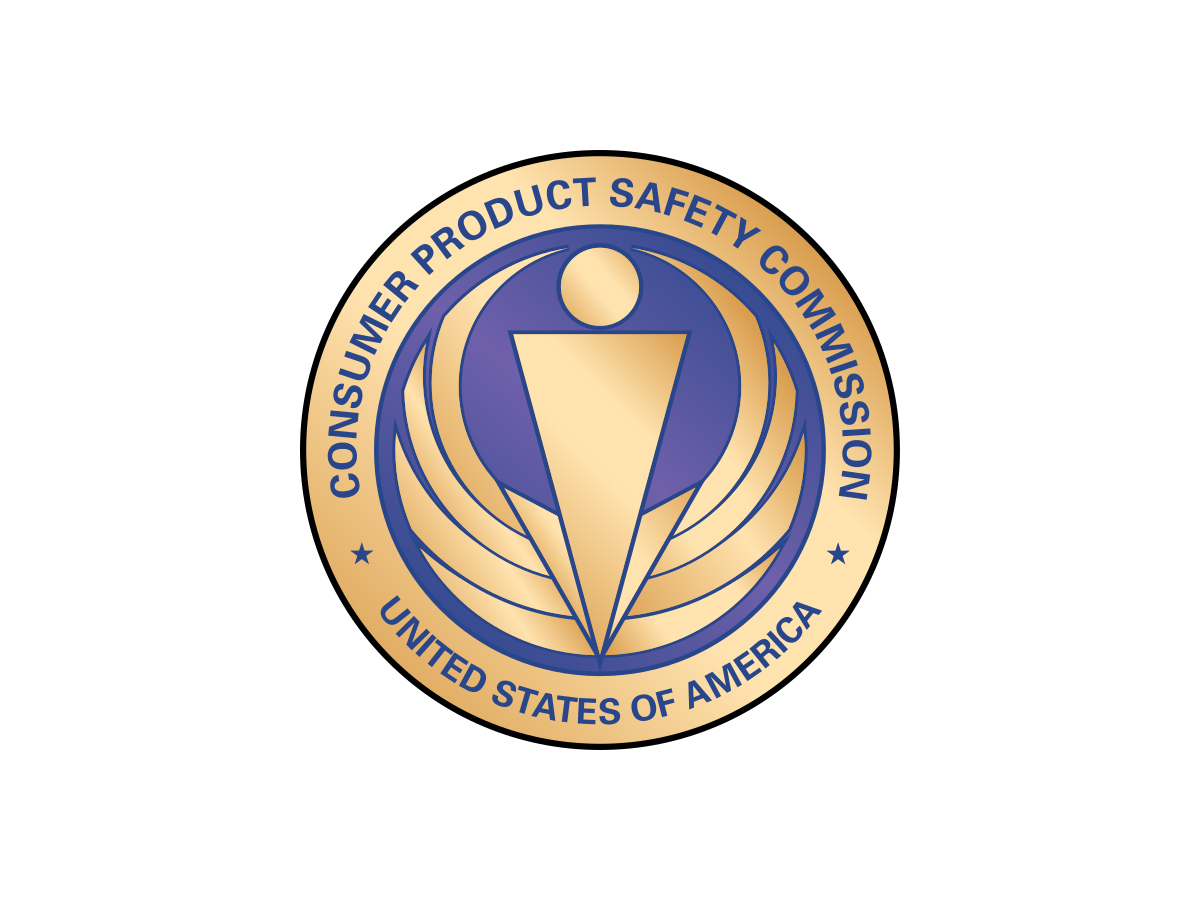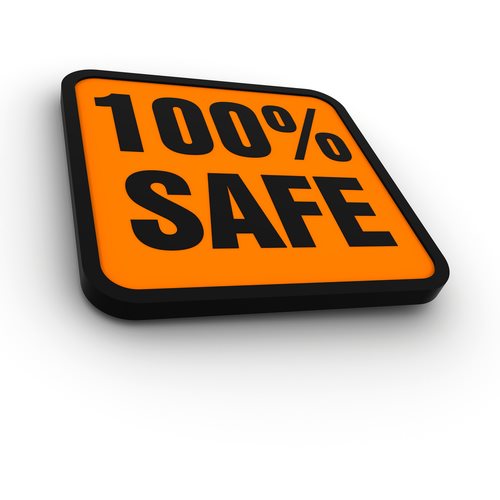When it comes to consumer safety, the Consumer Product Safety Commission (CPSC) plays a crucial role in protecting you and your loved ones from hazardous products. But what exactly is this organization, and why should you care? Picture this: You're shopping for a new toy for your kid or a fancy gadget for your home. How do you know it won't explode, catch fire, or harm anyone? That's where the CPSC steps in. It’s like the superhero of product safety, making sure everything you buy is safe to use.
Now, before we dive deep into the world of CPSC, let me tell you something interesting. Did you know that every year, millions of products are recalled because they fail to meet safety standards? Yep, it's true. From faulty electronics to dangerous children's toys, the CPSC has its hands full ensuring that manufacturers follow the rules. So, if you've ever wondered how your favorite products make it to the shelves without causing chaos, read on.
As consumers, we often take product safety for granted. But the reality is, without organizations like the CPSC, we'd be living in a world where anything goes. This guide will walk you through everything you need to know about the CPSC, from its history and mission to how it affects your daily life. By the end of this article, you'll have a clearer understanding of why the CPSC matters and how you can stay informed about product recalls and safety standards.
Table of Contents
- The History of the Consumer Product Safety Commission
- The Mission and Purpose of CPSC
- Organizational Structure of CPSC
- Understanding CPSC Safety Standards
- Product Recalls: What You Need to Know
- The Role of CPSC in Everyday Life
- Ensuring Compliance with CPSC Regulations
- Consumer Rights and Responsibilities
- The Future of CPSC and Consumer Safety
- Conclusion: Why CPSC Matters
The History of the Consumer Product Safety Commission
Let's rewind a bit and talk about how the CPSC came to be. Back in the day, before the CPSC existed, the market was kind of like the Wild West. Manufacturers could sell pretty much anything without much oversight. This led to a lot of accidents and injuries, which eventually caught the attention of lawmakers. In 1972, Congress decided enough was enough and created the Consumer Product Safety Commission.
The CPSC was born out of the need to protect consumers from unsafe products. At the time, there were no centralized regulations or agencies focused solely on product safety. So, they stepped in to fill that gap. Over the years, the CPSC has evolved, adapting to new challenges and technologies. Today, it's one of the most important regulatory bodies in the U.S., working tirelessly to keep us safe.
Here’s a quick timeline of major milestones in the CPSC's history:
- 1972: CPSC is established by Congress.
- 1980s: CPSC introduces stricter safety standards for cribs and children's toys.
- 2000s: CPSC expands its focus to include electronics and tech gadgets.
- 2010s: CPSC launches an online database for consumers to report unsafe products.
Key Players in CPSC's Formation
While the CPSC is now a well-known organization, it didn’t happen overnight. Key figures like Ralph Nader, a consumer advocate, played a huge role in pushing for stronger consumer protections. His work highlighted the dangers of unsafe products and paved the way for the CPSC's creation. So, if you ever meet Ralph, give him a high-five for all his hard work!
The Mission and Purpose of CPSC
Alright, let's talk about the CPSC's mission. Simply put, the CPSC exists to protect people from unreasonable risks of injury or death associated with consumer products. That’s a fancy way of saying they make sure the stuff you buy won't hurt you. Their purpose is to set safety standards, enforce regulations, and educate consumers about potential hazards.
But here's the kicker: the CPSC doesn't just focus on one type of product. They cover a wide range of items, from cribs and strollers to power tools and electronics. Basically, if it's something you can buy and bring into your home, the CPSC probably has something to say about it.
Core Values of CPSC
At the heart of the CPSC's mission are three core values: safety, transparency, and accountability. They believe in being open about their processes and holding manufacturers accountable for their actions. This commitment to integrity is what makes the CPSC such a trusted authority in the world of consumer safety.
Organizational Structure of CPSC
Now, let's take a closer look at how the CPSC is structured. The agency is led by a group of commissioners who are appointed by the President and confirmed by the Senate. These commissioners oversee various departments, each with its own specific focus. For example, there’s a department dedicated to investigating product hazards, another focused on enforcing safety standards, and yet another handling public outreach and education.
Here’s a breakdown of the main departments within the CPSC:
- Office of Compliance and Field Operations: Handles investigations and recalls.
- Office of Education, Global Outreach, and Consumer Affairs: Educates consumers and businesses.
- Office of the General Counsel: Provides legal support and guidance.
How the CPSC Works
The CPSC operates by conducting research, setting safety standards, and enforcing regulations. They work closely with manufacturers, retailers, and other stakeholders to ensure compliance. If a product is found to be unsafe, the CPSC can issue a recall, which means the product is removed from the market until it meets safety standards.
Understanding CPSC Safety Standards
So, what exactly are CPSC safety standards? Think of them as a set of rules that manufacturers must follow to ensure their products are safe for consumers. These standards cover everything from the materials used in production to the design and functionality of the product. For example, cribs must have certain spacing between the slats to prevent babies from getting stuck, and electronics must meet specific fire safety requirements.
Here are some examples of CPSC safety standards:
- ASTM F963: Safety standards for children's toys.
- UL 1642: Safety standards for lithium-ion batteries.
- 16 CFR Part 1203: Safety standards for bicycle helmets.
Why Safety Standards Matter
Safety standards are crucial because they help prevent accidents and injuries. Without them, manufacturers might cut corners to save money, putting consumers at risk. The CPSC ensures that safety is always a top priority, no matter how much it costs or how much time it takes.
Product Recalls: What You Need to Know
Let’s talk about product recalls, because this is where the CPSC really shines. When a product is found to be unsafe, the CPSC can issue a recall. This means the product is removed from the market, and consumers are notified so they can return it or get a refund. Recalls can happen for a variety of reasons, such as design flaws, manufacturing defects, or failure to meet safety standards.
Here’s how the recall process works:
- Step 1: The CPSC identifies a potential hazard.
- Step 2: They investigate the issue and determine if a recall is necessary.
- Step 3: They notify the public and work with manufacturers to remove the product from the market.
How to Stay Informed About Recalls
Staying informed about recalls is essential for your safety. The CPSC offers several ways to stay updated, including their website, social media channels, and email alerts. You can also sign up for their SaferProducts.gov database, where consumers can report unsafe products and view recall notices.
The Role of CPSC in Everyday Life
The CPSC plays a significant role in our daily lives, even if we don’t always realize it. Every time you buy a new product, whether it’s a toy for your kid or a blender for your kitchen, the CPSC has likely had a hand in ensuring its safety. They’re the ones behind those warning labels, safety instructions, and product certifications.
Here’s how the CPSC impacts your life:
- They ensure the toys your kids play with are safe.
- They test the electronics in your home for fire hazards.
- They regulate the furniture and appliances you use every day.
Real-Life Examples of CPSC Impact
Let’s look at a couple of real-life examples of how the CPSC has made a difference. In 2016, they issued a recall for millions of Samsung Galaxy Note 7 smartphones due to battery issues that caused them to catch fire. Thanks to the CPSC’s intervention, countless accidents were prevented. Another example is the recall of drop-side cribs, which were found to pose a suffocation risk to infants. The CPSC’s action led to a ban on these cribs, protecting countless babies.
Ensuring Compliance with CPSC Regulations
For businesses, complying with CPSC regulations is not just a good idea—it’s the law. Manufacturers and retailers must adhere to safety standards and report any potential hazards to the CPSC. Failure to do so can result in fines, legal action, and damage to their reputation.
Here’s what businesses need to do to stay compliant:
- Test products for safety before bringing them to market.
- Report any known hazards to the CPSC promptly.
- Cooperate with recall efforts if a product is found to be unsafe.
Penalties for Non-Compliance
Penalties for non-compliance can be severe. Companies that fail to follow CPSC regulations can face fines of up to $15 million, depending on the severity of the violation. Additionally, they may be subject to lawsuits and public backlash. So, it’s in everyone’s best interest to play by the rules.
Consumer Rights and Responsibilities
As a consumer, you have rights when it comes to product safety. You have the right to know about potential hazards and recalls, and you have the right to report unsafe products to the CPSC. But with rights come responsibilities. It’s up to you to stay informed, follow safety instructions, and report any issues you encounter.
Here’s what you can do as a responsible consumer:
- Check for recalls before buying new products.
- Follow safety instructions and warnings on products.
- Report any unsafe products to the CPSC through their website.
How to Report Unsafe Products
Reporting unsafe products is easier than you might think. Just visit the CPSC’s website and fill out their online form. Provide as much detail as possible, including photos or videos if applicable. Your report could help prevent someone else from getting hurt, so don’t hesitate to speak up.
The Future of CPSC and Consumer Safety
As technology continues to evolve, the CPSC will face new challenges in ensuring consumer safety. From smart home devices to electric vehicles, the products we use are becoming more complex and interconnected. The CPSC will need to adapt by updating its standards and expanding its focus to include emerging technologies.
Here’s what the future might hold for the CPSC:
- Stricter regulations for smart devices and IoT products.
- Increased emphasis on cybersecurity and data privacy.
- Collaboration with international regulatory bodies to address global safety concerns.
Staying Ahead of the Curve
To stay ahead of the curve, the CPSC will need to continue investing in research and innovation. They’ll also need to work closely with industry leaders and consumer advocates to anticipate and address new safety challenges. By doing so, they can ensure that consumers remain protected in an ever-changing world.
Conclusion: Why CPSC Matters
In conclusion, the Consumer Product Safety Commission is an invaluable resource for consumers and businesses alike. By setting safety standards, enforcing regulations, and educating the public, the CPSC helps prevent accidents and injuries caused by unsafe


